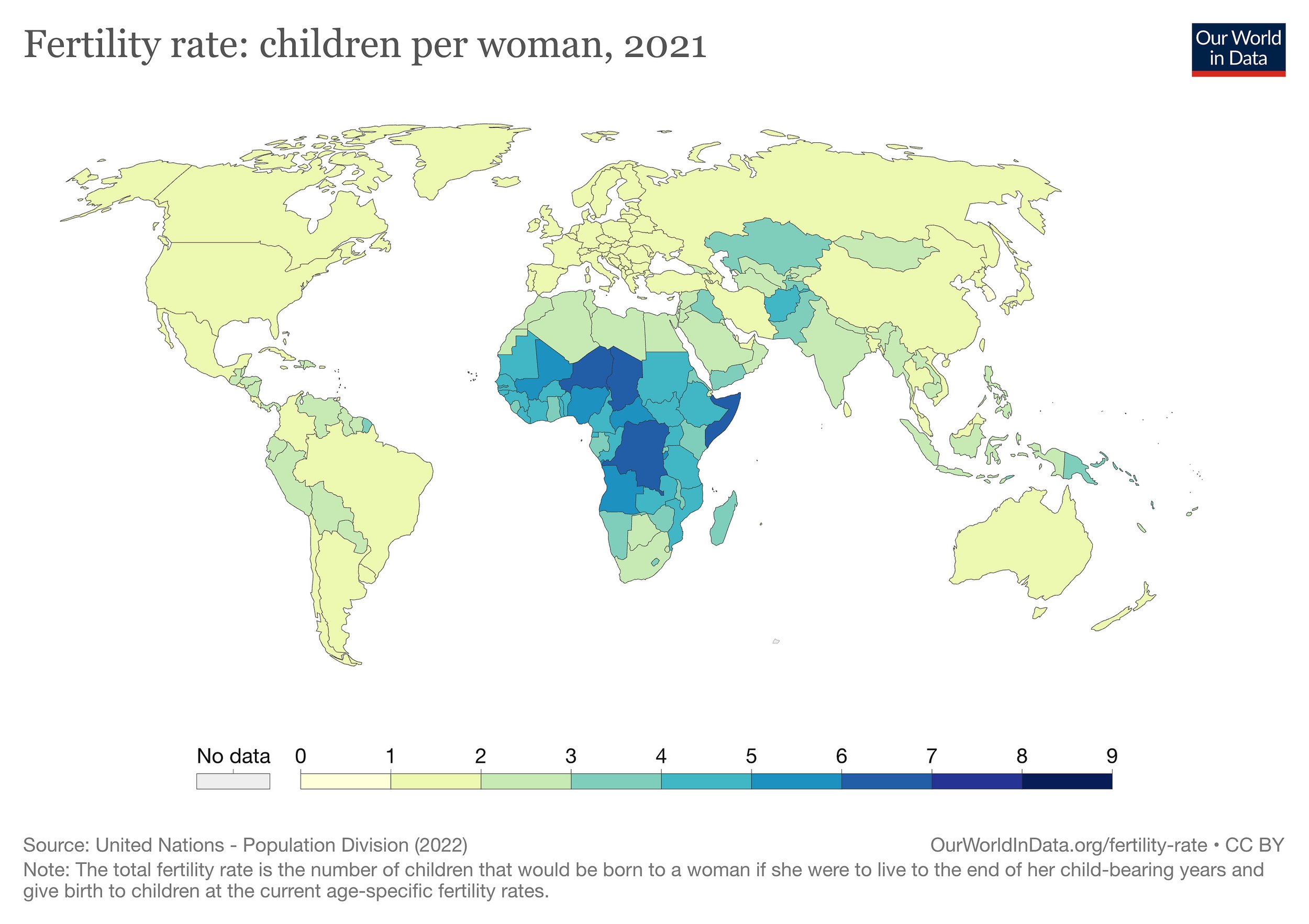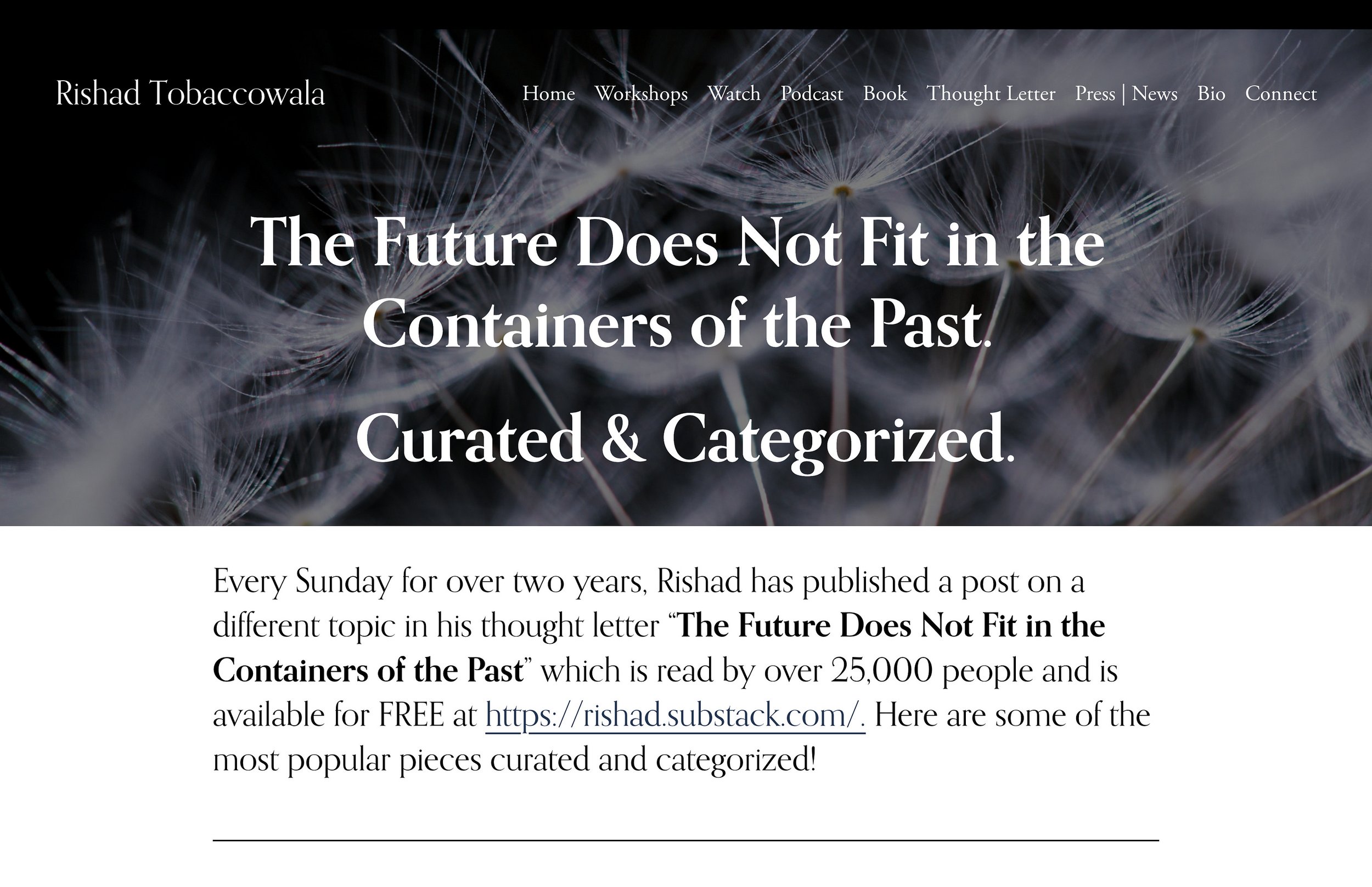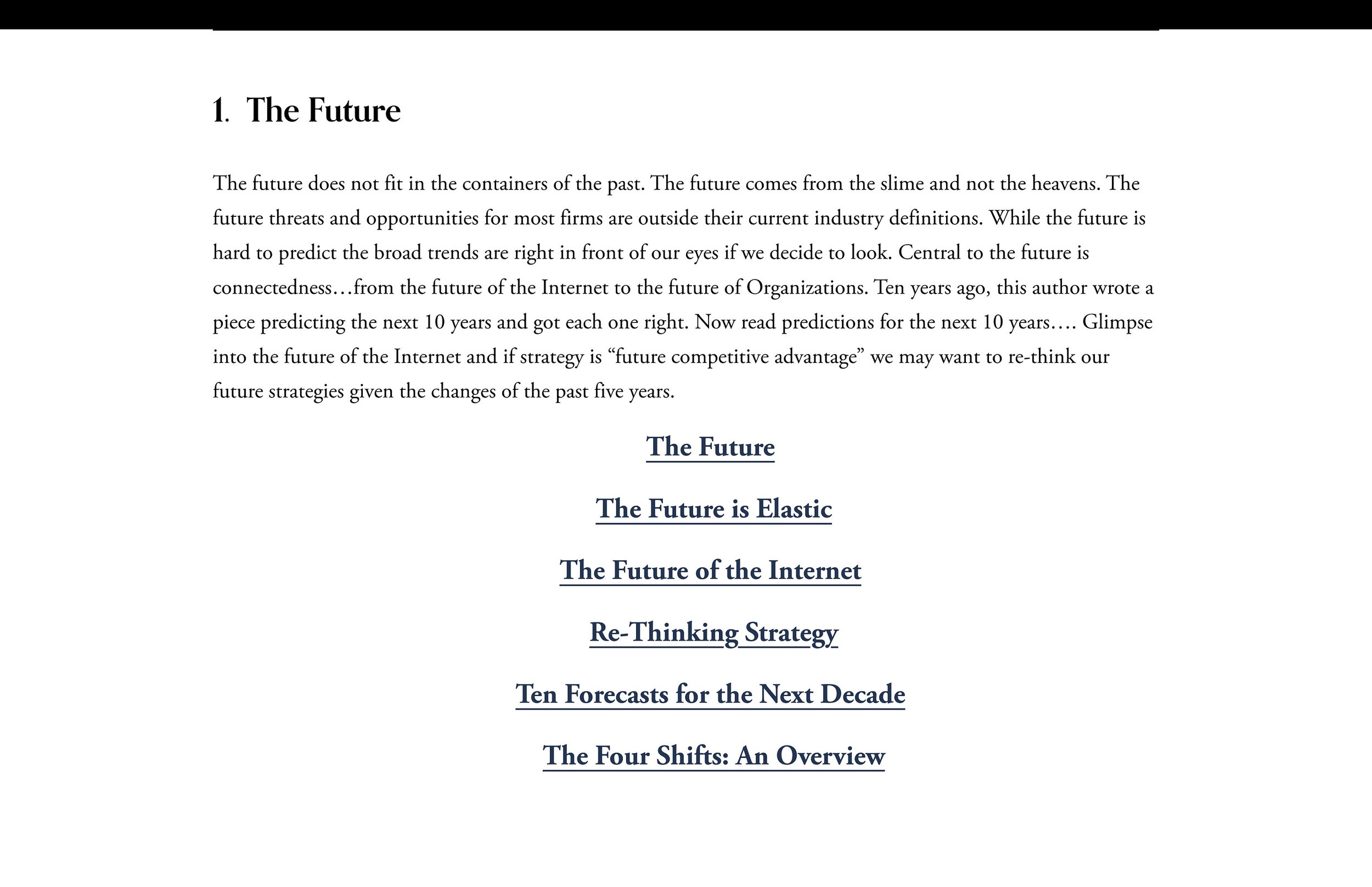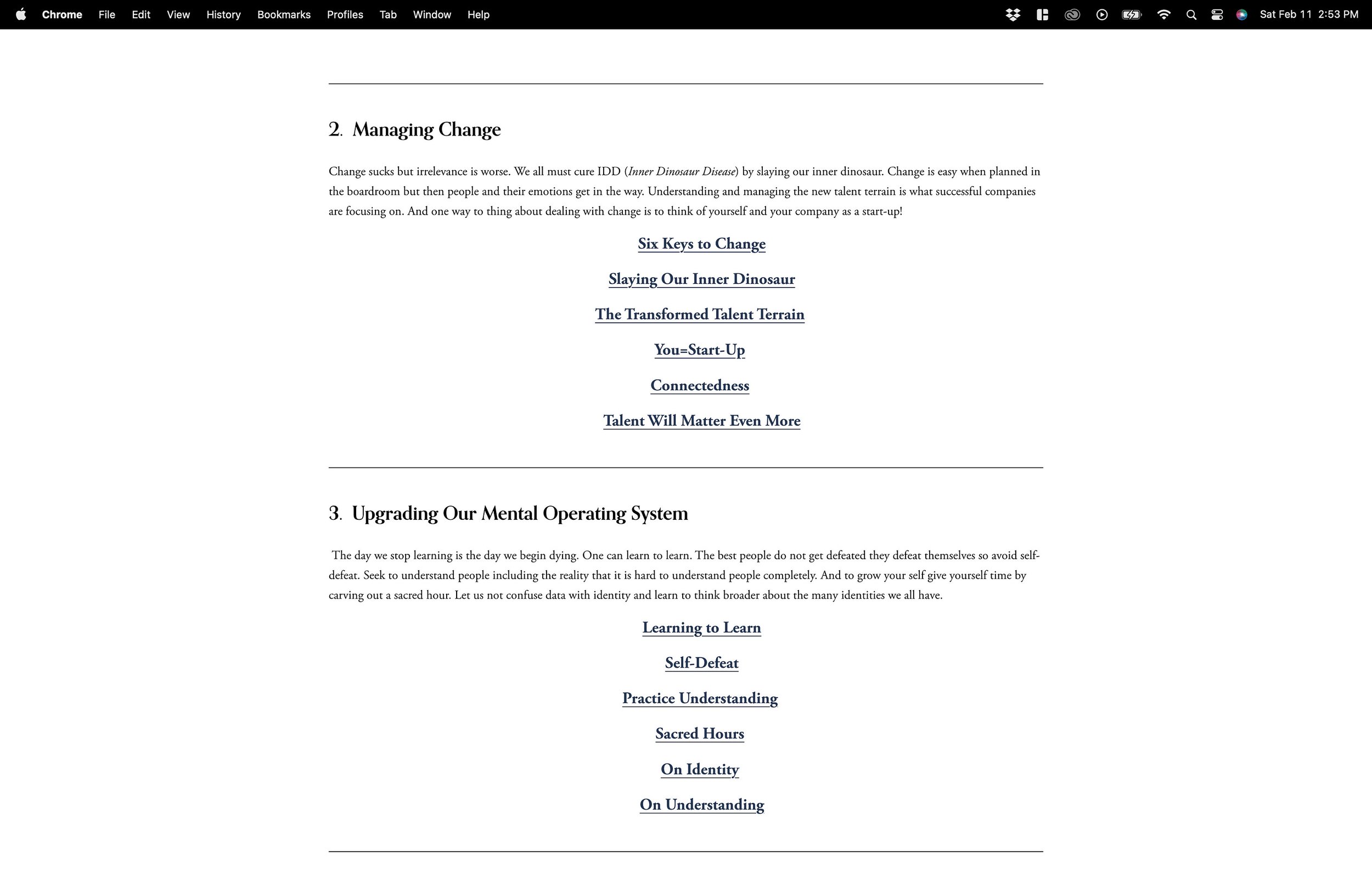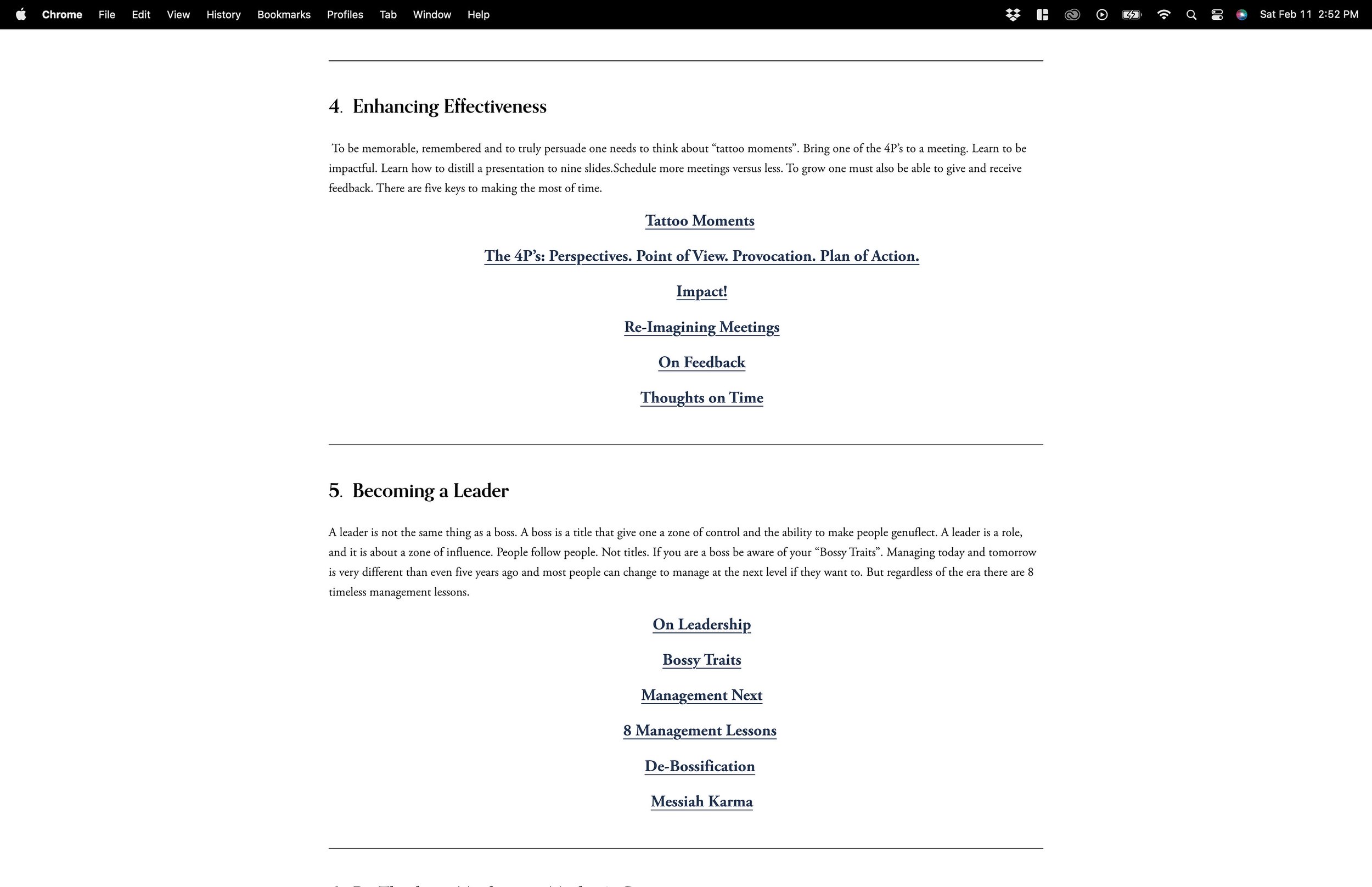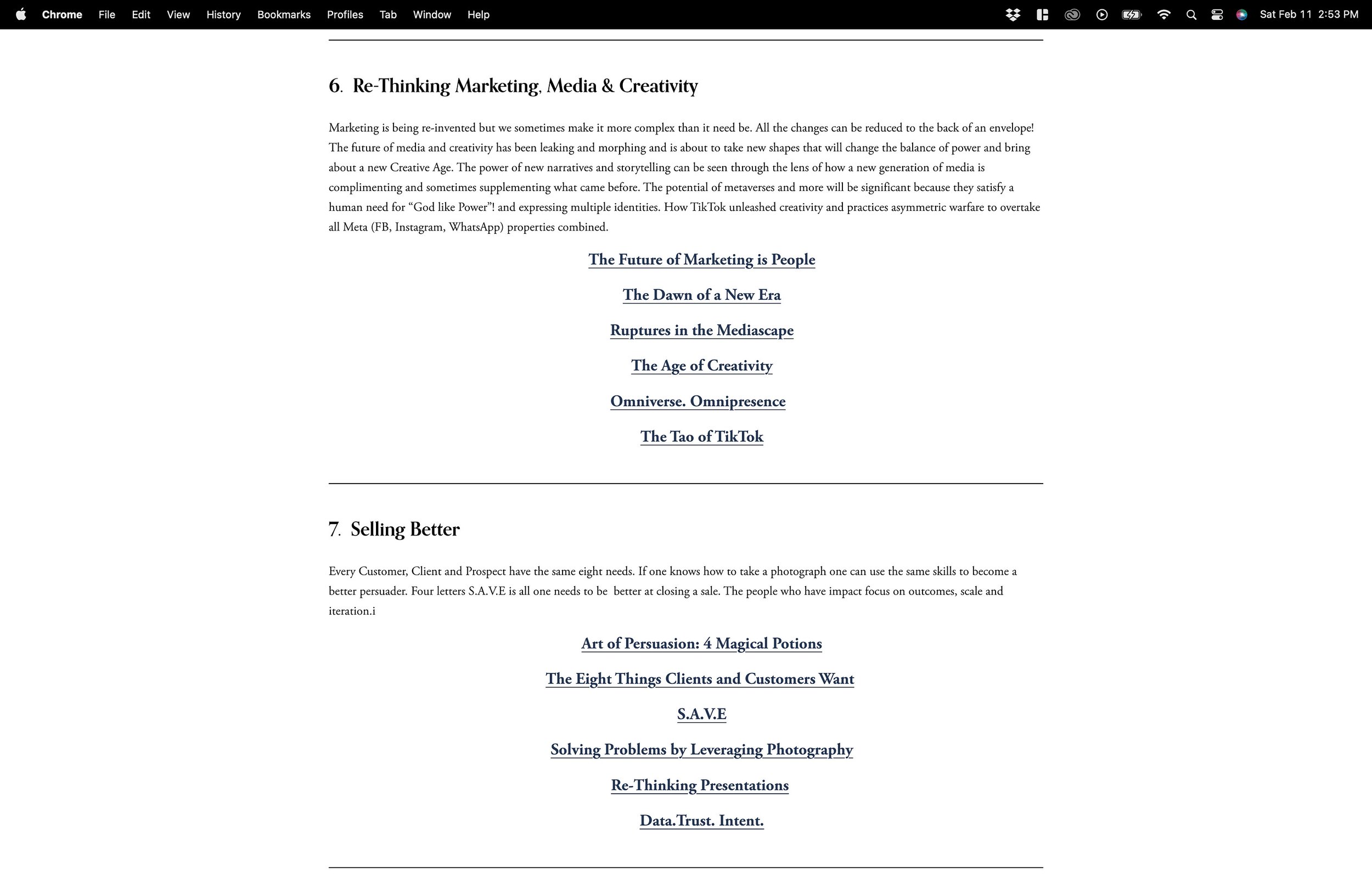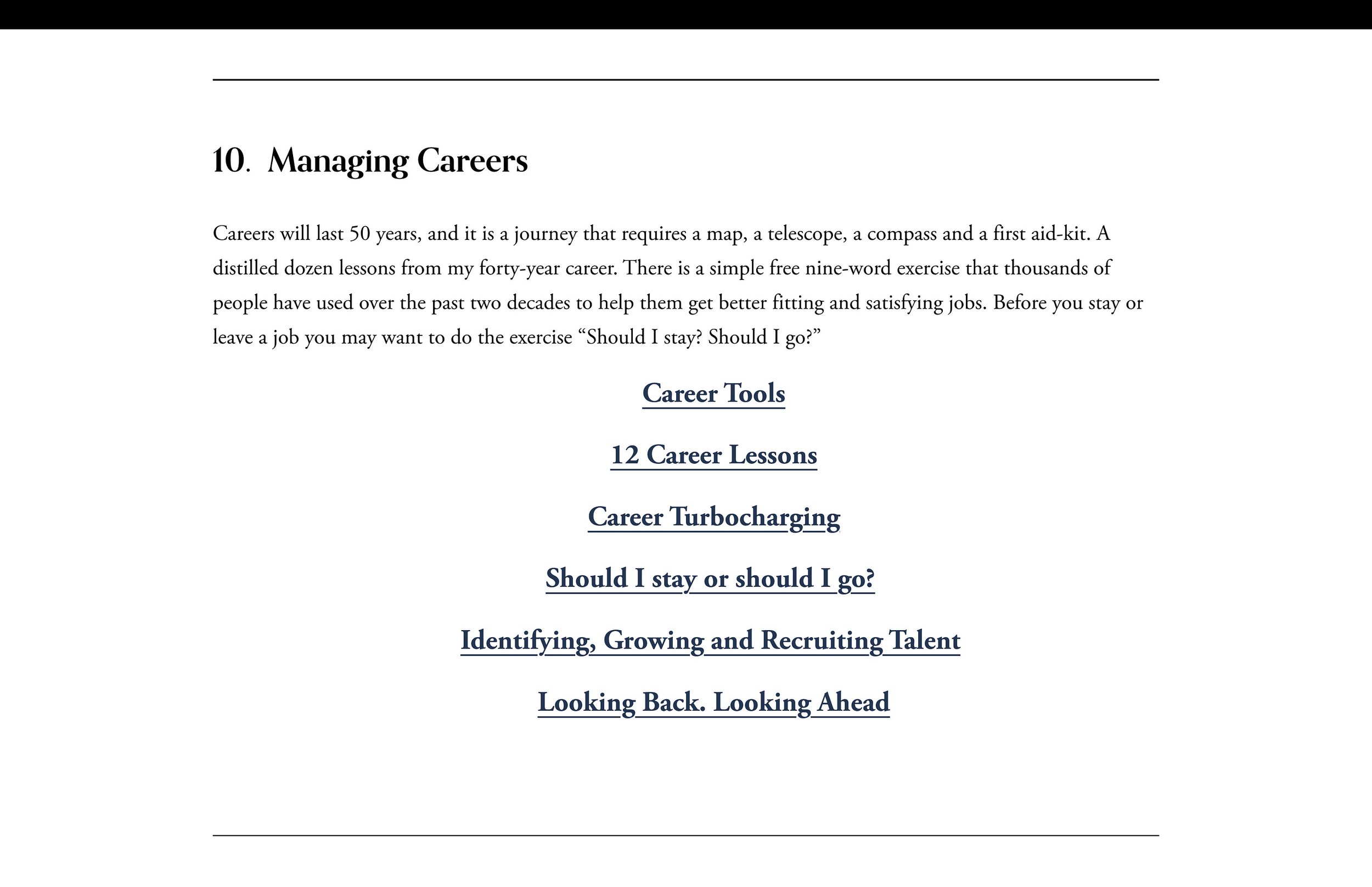Fewer.
An underlying assumption many individuals, managers and businesses incorporate into our decisions and choices is the concept of maximizing.
While much of growth and well-being may be driven by more, a case could be made that less is what many should aim for if we are to solve problems, be happier and grow.
We are moving into an age of “fewer”.
Fewer things.
Fewer “managers”.
Fewer big companies.
Fewer people.
Which might give rise to greater rather the fewer opportunities.
1. Fewer things.
In a piece on Sustainable Commerce Rex Woodbury points out the following:
a)Brands overproduce more than $500B of goods annually. In many categories less than half the inventory is sold.
Source: Hannah Murdoch & Rebecca Kaden of USV and Shopify data
b) Much of this unsold product ends up in landfills like the Great Pacific Garbage Patch, which covers 1.6 million square kilometers in the Pacific Ocean between Hawaii and California. The garbage patch is growing exponentially, swelling 10x each decade since 1945.
c) Most of the fast retail clothing is worn fewer than 6 times and is tossed filling landfills
What if one of the most powerful ways to address environmental challenges is to buy, consume and sell less?
2. Fewer Managers.
Listen carefully to many employees as to why they prefer working from home or away from the office and in addition to flexibility, freedom, and work-life balance it is that they are more productive away from micro-managing, controlling, monitoring, continuously checking in management.
The past 3 years of working from home and or hybrid work has revealed that many managers are in crisis because they were not really managers but monitors, not leaders but bosses, not problem solvers but project assigners, and the talent who they oversee have begun to wonder what actual value their managers create besides “managing”.
Managers are an important role but as wonderful survey of research by NPR “Why your bad boss will probably lose the remote-work wars” reveals much of the blather about the importance of returning to the office is because management has failed to re-invent itself and recognize that there is much less need for their hovering. That in person interaction is key for training, creativity and relationship building but a forced march to x days in an office may not be the way to achieve this.
Fewer great in person interactions versus doing work one can do at home from the office.
We have entered an age of “De-bossification”
In many industries particularly “White-collar” ones the era of “bosses” is in decline.
There is a rise in the need for leaders, guides, coaches, mentors, role-models, creators, and builders.
Less of a clamoring for bosses, managers, controllers, monitors, evaluators, and paper pushers.
This shift has been driven by changing demographics, the spread of technology, the rise of unbundled and distributed work, new behavior expectations, and a re-definition of what “work” is including the rise of fractionalized and free-agent talent who work for themselves or at multiple jobs and are expected to comprise most of the work force in the US by the end of the decade.
More and more companies like Meta are interrogating why they have so many levels of managers and do these managers create enough value and to offset their cost and the extra slowness multiple layers can create.
2023 will be the year of “The Great Flattening” as multiple layers of hierarchy are interrogated.
People think the threat of a recession will give the balance of power to managers over employees when the exact opposite is likely to be true where employees have many more options because of a new world of marketplaces and technologies and three years of recognizing that individuals succeeded without too much management will have Board look at the layers of bosses and cut real estate costs.
3. Fewer Big Companies.
A recent Wall Street Journal article, relying on labor data and an analysis from Jeffries, an investment banking and capital markets firm, determined that small companies were responsible for all of the net job growth since the start of the pandemic and accounted for four out of five job openings. According to the government’s Job Openings and Labor Turnover Survey, companies with fewer than 250 employees hired 3.67 million more people than have been laid off or who quit since February 2020. Larger companies, on the other hand, have cut a net 800,000 jobs during this time.
Increasingly scale is a disadvantage because modern technology, cloud computing, and marketplaces from Upwork to Shopify allow small firms and individuals to tap into scaled resources just in time while being agile and keeping costs flexible.
Technology is the slingshot that allows David to take on Goliath.
In addition to enabling technology there is a new mindset favoring small:
Over a third of Gen-Z have side-hustles and side-gigs as being a maker, owner, creator, influencer is far more compelling than being just a managed employee.
4. Fewer People
It takes 2.1 children per woman to keep the population flat.
That number in most advanced countries is less than 1.7 and declining.
The latest UN projections suggest that the world’s population could grow from 8 billion people to a peak of 10.4 billion before the end of this century. But if we exclude population growth in Africa the population of the world has peaked and, in a few countries, we are starting the great shrinkage.
The Shanghai Academy of Social Sciences team predicts an annual average decline of 1.1% beginning in 2021 pushing China’s population down to 587 million in 2100, less than half of what it is today.
Every business should interrogate their strategy to ask two questions a) how will our plans be impacted in our key markets with declining populations and b) what is our plan for the continent of Africa which will contain more 40 percent of the global population in 2100?
So, as we navigate the future, we may want to start planning on how to grow in a world of fewer, smaller and less than a world of unlimited, bigger and more.
Sports=Future
Artwork by LeRoy Neiman
A few months ago, I was connected to Dr. Sascha L Schmidt the Director of the Center for Sports and Management at WHU – Otto Beisheim School of Management which is a leading German business school in Dusseldorf.
Dr Schmidt began his career at McKinsey and worked on a start-up before combining his hobby and passion for sports with his job. Today he is one of the pioneering thinkers and researchers at the confluence of sports and technology. He also lectures at MIT and is an affiliate professor at Harvard and is the editor of 21st Century Sports: How Technologies Will Change Sports in the Digital Age
Over the past few weeks, we have worked together on two projects. Dr Schmidt asked me to contribute a new chapter to the updated edition of 21st Century Sports which is titled Sports in the Third Connected Age and we spoke at length about where business, sports, technology, and the future intersect for the What Next? Podcast I host. ( Listen to it here or see more below)
Over these weeks it dawned on me that one way to both understand the future, to get people excited about the future ad to re-imagine the future is to follow the future of sports which is far more approachable to most people than the future of technology.
So here are five ways that sports are shapeshifting which is directly applicable to every individual and business.
Artwork by LeRoy Neiman
1. The Great Mongrelization.
Sports and entertainment were always integrated and today it is live sports that dominates entertainment and in many ways is the heartbeat keeping linear television alive.
But sports does not just drive television now television resurrects and gives new life to sports as seen in the massively popular Drive to Survive series from Netflix.
Nielsen found that 34% of Netflix viewers became fans of F1 racing after watching the series. Another 30% said they understood the sport more, and 29% said they felt more engaged with the sport.
Sports and television have been long intertwined and 25 years ago Michael Jordan in Chicago fused fashion with sports by dressing in bespoke suits as he arrived and left the locker room.
Since then fashion has weaved its way into every aspect of sports as illustrated in the fact that the World Cup trophy handed to Lionel Messi was delivered in an LVMH case.
If fashion is a form of identity so is our sports allegiances and except for Harley Davidson most fans tattoo their teams and not brand logos on themselves.
And sports and fashion and social media make for a quantum force of congruence and re-enforcement.
The CEO of Endeavor, Mark Shapiro recently noted the intersection between sports, fashion, and new media “In the era of social media, when Instagram moves product and the camera is always on, the legend gets made on the field. But every other waking moment is an image-making performance about what you are wearing, the products you use and how that gets shared.”
To understand the future of media, business, fashion and much more follow the future of sports! This way it is easier to explain to Board Rooms who may be less passionate about technology than sports to open their eyes to the future and open their pocketbooks to fund the future. And Sports also helps one to understand why the threats and opportunities to a business come from adjacent areas which intersect and combine like fashion and sports.
Artwork by LeRoy Neiman
2. Only the Schizophrenic Will Survive.
Most businesses struggle with ensuring that they make their numbers today, keep true to their brands, and focus on their roots while also enabling their future, re-imagining brands and finding new wings. It is never either/or but both/and.
It is the schizophrenia of balancing today and tomorrow versus being paranoid about the future or remaining rooted in some psychological fixation on the past which creates long term success.
Sports has grown, surged, adapted, and morphed but has worked hard to remain conservative, true to history, respectful of legacy.
Rules and governing bodies are strict but adaptable as new technologies from lighter equipment, stronger materials and other innovations change the contour of sports including a world where fans expect more, faster, and quicker.
If one looks at the highest levels of Cricket which began as five-day affairs with white clothed players and breaks for tea and lunch one sees these “Test” matches between countries continue but now limited over cricket has taken the world by storm and IPL cricket in India has become the fastest growing sport.
To understand how to take our company, brand, and ourselves into the future by balancing today and tomorrow, risk and reward, roots and wings we can learn from how different sports are adapting to the future. Translating their moves to our industry allows for examples but also much easier translation and buy-in.
Artwork by LeRoy Neiman
3. The Future is Global.
Sports is the canary in the coalmine that reminds us that globalization is here to stay.
Sports, entertainment, and food are three human desires and needs common everywhere and these three have been turbocharged with advances in communication and other technology.
Advances in travel have globalized food, advances in communication and technology have globalized entertainment (the biggest shows in the US on Netflix are often from countries outside the US and many of the hits on Spotify today are from Latin America).
Communications and Technology has truly turbocharged sports bringing Cricket and F-1 sports to the US and taking NBA and NFL basketball to Europe and other areas.
As importantly 6.5 billion mobile phones and the Internet have created a constantly connected and engaged global fan base. With some small exceptions sports is the one content type that is not censored or edited around the world.
Any business or talent that questions globalization ( a multi-polar globalization with many centers of power versus just the West) just needs to look at the success of sports and the focus that each sport is trying to globalize itself.
Artwork by LeRoy Neiman
4. The Triangle Rules!
There is no silver bullet in business because every business has three core constituencies that must be listened to and served.
The customer/consumer is one, management/shareholders are the second and employees/suppliers are the third.
No business can endure without finding a way to balance these needs as they move into the future.
Skewing too heavily in only one direction leads either to bankrupt companies, destroyed brands or an inability to attract and retain the talent.
Sports franchises continuously work out a way to balance the fan, the player and owners needs with a plethora of different rules, salary caps and much more.
To understand how to balance, weigh and adapt to changing needs and circumstances of the three key constituencies as one’s industry changes look no further than different sports leagues to learn from their successes and failures.
Artwork by LeRoy Neiman
5. Reset. Resurrect. Reimagine.
Every sports player works to reset continuously through feedback and iterative improvement.
Many of those real time and constant feedback loops are now becoming available outside of sports due to large amounts of real time data and our instrumented selves and dashboards. Using this information, we all need to learn the value of resetting each time we start a project from the learnings of what worked and what did not from the past.
As AI and other technology spreads, we can learn from Sports Leagues which have pioneered many of these technologies and data from the Oakland A’s of Moneyball fame to how to chess players integrate computers into their training.
Athletes lose much more than they win land need to resurrect themselves from defeat.
Similarly, today many companies find themselves threatened with potential defeat by new entrants, new technologies and the new needs of the people they serve. The ability to re-invigorate, refresh and reboot is a key to success in these fast-changing times.
Finally, technology is forcing Sports to re-imagine not just each sport but what sport is.
E-Sports of today will morph into new types of sports in an AR/VR world.
Ownership of sports and creation of leagues may change with Blockchain and DAO’s.
We will soon have virtual players playing virtual games in virtual worlds which we will all watch virtually.
Sports has shown that anything is possible if one is willing to balance today and tomorrow, address needs of different constituencies, be open to incorporate and blend parts of other industries, never lose the focus on globalization, and continuously measure to reset, resolve to resurrect when down and re-imagine what can be!
The future is sports.
Great Interactions!
Photography by Paul Wakefield
At times when we meet with people individually or participate in a meeting, we leave believing that we enjoyed a great interaction.
Over time it has become clear that to ensure great interactions individually or with teams we should focus on leaving them with three things:
Clarity. Belief. Energy.
Thanks for reading The Future Does Not Fit In The Containers Of The Past! Subscribe for free to receive new posts.
Photography by Paul Wakefield
Clarity.
The Cambridge dictionary defines clarity as the quality of being clear and easy to understand.
In a great interaction or meeting people come out with a clearer understanding of a situation, with greater precision of knowledge, and clear-cut next steps than before the meeting or interaction.
Doubts are cleared. Any mixed signals clarified. Hedges eliminated.
Everybody is clear as to what they need to do next and who is doing what.
One leaves the interaction better informed and equipped to tackle whatever the challenge or problem might be.
Now think of the meetings one has when people come out more confused, more unsure of what to do. We have all attended these group gropes or even individual one on one meetings which were thick with dense mumbo-jumbo, buzz-word bingo, oozy obfuscation and mixed signals that left us more mystified and doubtful than before we had the interaction.
One way of ensuring clarity is to speak simply using plain language and have people play back what the next steps are.
Photography by Paul Wakefield
Belief.
It is one thing to be clear as to what must be done next but as important is to leave an interaction with a greater belief in your or your team’s ability to do what is necessary.
Many managers collapse the mood of a room by berating an individual or team’s performance without some offsetting knowledge or guidance on how they can do things better or improve themselves.
A great interaction occurs when one leaves a meeting feeling more confident about one’s capabilities in tackling what must be done. Even if one had received feedback in a meeting about not having done a good job it is key to leave with guidance and a sense of motivation that one can fix the situation and finding a remedy.
A dirge like procession of individuals with hang-dog faces, droopy shoulders and shuffling feet is not just a downer but a negative vibe that echoes through everybody who interacts with the individuals whose self-belief was drained out of them.
A key is to leave someone feeling better about themselves after you meet them rather than worse even if you provide them with less than positive information by showing how you or another individual tackled the same problem, reminding them of the times they recovered when they were knocked back by a challenge or sharing your individual stories of tackling similar situations.
Photography by Paul Wakefield
Energy.
We are living in a time of great change, accelerating velocity of business and multiple pressures.
This is leaving people often drained, burned out and wanting to just curl up under a blanket from the noise and tension.
Great interactions leave people rejuvenated, replenished, and refreshed.
While clarity is about the mind, belief about the heart, energy is about the body.
Bringing energy to a meeting can boost others. Energy is contagious. Other ways to leave people more energized can involve leveraging humor, providing the opportunity to take a break, or bringing empathy and understanding on the forces that drain energy with some ideas of fixing them that can leave people with a boost.
Regardless of whether one interacts in person or remotely, individually or in groups, how senior or junior one is the likelihood of having a great meeting or interaction is likely to improve if one focusses on leaving everybody you interact with clarity, belief, and energy.
A Gift.
Two and half years ago on Sunday, August 16, 2020 I began the first edition of this thought letter as follows:
The idea behind this newsletter is that of a gift.
Like a gift it is free (no subscription fee, no up-charges to access special content, no advertising, no affiliate links, your email will not be shared or sold, and no algorithm is running in the background mining your behavior)
Like a gift I hope it will be of some value in helping you see, feel and think differently about how to grow yourself, your team and/or your company in the future.
Like a gift, I hope it will generate goodwill for the giver. Your attention and time which is so valuable. Good karma. Stronger relationships.
Since then I have written every Sunday for 131 weeks on a different subject.
Have been fortunate that tens of thousands of people subscribe or read my writing every Sunday (it is also reprinted and distributed by other publications all over the world) and increasingly there has been a request to find ways to access past writing when someone wants to share or use it for some reason. Almost all my pieces are evergreen since they are not aligned with the news or politics so you can read a piece from two years ago and it is likely to be relevant to the times and your needs.
So, I have curated the best 6 pieces of writing in the 12 areas that I write about on a single page that can be bookmarked, shared, and accessed by anyone anywhere on any device without charge or even entering an email.
This page will constantly be updated always containing the six best pieces in each area. A better piece will replace a current piece. So, it will not only be current but continue to be a distillation of the best.
Here is the page: https://rishadtobaccowala.com/100 and below is a look on what is available in each of the 12 areas and how best to leverage it.
The Future.
We all should be concerned about the future since we are going to spend the rest of our lives there. This section contains a broad thesis on the future (The Future), the four shifts remaking the future (The Four Shifts) as well as ten specific forecasts for the next 10 years (Ten Forecasts for the Next Decade) and why every company needs to re-think its strategy (Re-Thinking Strategy) and how future organizations will be elastic in nature (The Future is Elastic)
Managing Change and Upgrading Ourselves.
The future does not adapt to us but we must adapt to the future.
This means we must change. But change sucks. However since irrelevance is worse, we must change. How do we manage change especially our own? (How do we slay our own inner dinosaur?) And what are the essential elements of making a company transform (Six Keys to Change)
One of the ways to transform and change is to upgrade our own mental operating systems. (Learning to Learn), ensuring that we do not get so high on our own fumes that we fail to adapt and defeat ourselves (Self-Defeat),
Enhancing Effectiveness and Becoming a Leader.
In an accelerated world of unbundled and distributed work and next generation technologies such as AI we will see a decline in the power of “bosses” (De-bossification) and a need to work not just in tandem with but add value to the increasing capability of machines. (The Four P’s). How does one lead and be effective in such an era? (Management Next?) How do we re-imagine meetings and how do we give feedback in a world of DEI, ESG, Remote Work and concerns about our own relevance? (On Feedback) We will work with machines but influencing, inspiring, and building people will still be critical (Tattoo Moments, On Leadership)
Re-thinking Marketing and Selling Better.
Marketing is being re-invented but frankly people have made it needlessly confusing. The Dawn of a New Era attempts to explain the future of marketing with one single chart! The Future of Marketing is People makes the case we should not think about consumers, customers, and members but people, that we should market through people versus to people and that marketing people need to upgrade their skills and their roles in the company. The Age of Creativity reminds us that in a world of plumbing it will be poetry that will differentiate.
We are all in sales in one way or the other. The Art of Persuasion:4 Magical Potions distills the best learning on this topic from Eight Things Clients Want, how to Solve Problems Using Photography, why S.A.V.E is a key filter for sales and why if you need to have a deck of more than 9 slides you truly have nothing to say. Re-Thinking Presentations remains the most popular post I have written.
The Future of Work and Creating Great Cultures.
My next book (in progress) to be published globally by McGraw-Hill in Fall of 2024 is tentatively titled Re-Thinking Work. The challenges of distributed work post Covid that companies are struggling with is but a side show to what is coming in a world of four generations at work, next generation technology, new marketplaces, and a wave of multi-polar globalization among many things (How to Thrive in the Modern Workspace). Work in 2029 will look nothing like 2019 in how it will be done, who will do it, where it will be done but why we work and the importance of culture (Culture), the need for employee engagement (The Triangle of Engagement), the critical role of talent ( Identifying, Retaining and Growing Talent) and what will attract people will stay the same (The Great Attraction).
Managing Careers.
Make no mistake every single person at every level of every firm is re-thinking their career. My career writing except for a post on how to write presentations (Re-Thinking Presentations) are the most read and shared. Thousands of executives have leveraged these learnings. Read Career Tools for an overview, 12 Career Lessons and Looking Back, Looking Ahead for everything I have learned in a forty year career on how to manage a long and winding journey that we will all have, and Career Turbocharging is an exercise that will change the way you frame and filter yourself and your opportunities forever.
Personal Growth/Wisdom.
My older readers find these pieces particularly relevant, and this is the section most shared by many leaders with their teenage or young adult children.
The only thing we have is time (Time Passages). And so much of life is a combination of Story. Place and Loss.
While we are growing our companies and our bank accounts and our reputations let us not forget to grow ourselves (Sacred Hours), that we got here because of mentors and guides and other elders (Go the Extra Mile it is Never Crowded) and let us not forget that in the end it is about Architecting Joy, Generosity, and Dignity.
Hope you will find this page (https://rishadtobaccowala.com/100 ) helpful in your work and life. Feel free to use all of it. Nothing is copyrighted. Nothing needs to be attributed. There is no cost and there will never be a cost.
A Gift to you for the gift of your time in taking time to read my writing.
Thank you…
The Future of Marketing is People.
Painting by Edward Hopper
The future of marketing is people.
A) It is about understanding people as people and not just as consumers, customers, members, and users.
B) It is about getting people to advocate for a brand to other people.
C) It is about upgrading the status of marketing people and upgrading marketing people.
Painting by Edward Hopper
Marketing is about understanding people.
For too long marketers have fixated on consumers, customers, members, and users.
While these are important what is critical is seeking to understand people as people.
When one looks at a person as a consumer one is liable to miss a lot for the following reasons.
1) Narrow Lens: When one looks at a person as a consumer it is looking to understand the person through brand usage which is by very definition one of hundreds of brands filling met and unmet needs of a person. People do not define themselves by brands and rarely want to have relationships with brands. Some marketers define themselves by brands and have the delusion that people want to have a relationship with Tylenol versus just wanting their headache to go away.
2) Failure to see competitive threats: Viewing people as consumers or users means evaluating and benchmarking one’s brands with their use of other brands in one’s category. However, the greatest threat and opportunity tends to come from outside one’s category today due to technological disruption and changing behavior. Newspapers were disrupted by Google. Magazines by Instagram and today Television by Netflix and TikTok for example. Focusing on consumers and users meant that none of the incumbents were monitoring these other players. A focus on one’s category may lead a brand to be less pathetic than others in their category but not great or relevant for the future.
3) Failure to understand needs: One of the reasons categories get disrupted from outside is because by seeking to understand a person through category dynamics one may miss understanding what they are truly seeking. Dollar Shave Club and Harry users were not just looking for the best shave but a decent shave at a great price and convenient purchase. Multiple blades, vibrating blades, heated blades were no longer the key.
Painting by Edward Hopper
Marketing is getting people to advocate for you to other people.
The most powerful form of marketing has always been word of mouth.
Word of mouth has become exponentially more powerful due to social media and new tools and technologies.
Tik Tok provides editing and other tools to let anyone create and mix videos. Substack enables reaching tens of thousands to millions of people. It is easy to create and distribute podcasts.
Social media channels enable distribution.
Influencers and creators become key to a brand.
Instead of marketing to people we should consider marketing through people by arming them with assets, information, tools, and incentives.
Also, every marketing company should fixate on their employees and suppliers.
Make employees advocates by treating them well and aligning them with the marketing program.
Inform, trust, and pay suppliers well. They can be a source of ideas, marketing, and competitive intelligence.
Emerging AI tools such as ChatGPT will further empower the individual and the underlying trends of Web3 will now give them not just a voice but ownership.
Every company’s marketing and media programs should be grounded in marketing through people with significant investment and emphasis on generating and building advocacy among one’s external and internal audiences and partners.
One should fixate as much if not more on people than fixating on first party data, AI and the Metaverse.
Painting by Edward Hopper
Marketing is about upgrading the status and skills of marketing people.
Forty years ago, in my first marketing class at the University of Chicago we read Philip Kotler (a renowned marketing guru operating a few miles away at Northwestern University) who defined marketing as “understanding and meeting people’s requirements”
For the next four decades I got to work with some of the best marketing companies in the world and looking back two things stood out which taken together raises concerns:
1) Marketing has become more critical: People became more empowered as technology enabled them to have “God Like” power particularly in the past two decades since the scaling of Search, Social, E-Commerce and Mobile. These new technologies also have merged offline/online, above the line/below the line and fused marketing and experience into one. Therefore, understanding and meeting the requirements of people/gods became more important. So marketing was growing more and more critical.
2) Marketers power has diminished in most companies: The first two decades of my career it was not just Agencies that got to present to the Board room, but marketers did. Today look at the Board of Directors of companies including marketing firms, and few have CMO’s on the Board. There is the voice of money in the CFO, the voice of technology in the CTO/CIO, the voice of talent in the Chief Human Resources/Talent officer but where is the voice of the people/customer/consumer just when they are growing more and more powerful?
Companies will find it very difficult to succeed in a world of empowered people unless they have empowered marketers, marketing fuses into every part of the company and every individual upgrades their skills. Marketers need to be in the room where decisions are made rather than implementing or informing decisions.
But the wheel may be turning…
Recently there are signs that marketing is getting a voice by transforming the CMO role to one of a Chief Growth Officer, Chief Experience Officer, or Chief Transformation Officer or combining a CMO role with a Chief Data Officer role and no longer separating CMO from Chief Digital Officer.
Companies are beginning to look for “full-stack” marketers who can drive performance leveraging data and technology and platforms in the short run while building brand and reputation with storytelling, design, cultural relevance and more.
Marketing people need to have a greater voice and to have a greater voice marketing people need to upgrade our skills and capabilities for a world where marketing is not a side car attached to a motorcycle with some carnival barkers but the engine that makes the motorcycle and its engine throb.
The future of marketing is people.








